In a disappointing scenario being played out in disaster-stricken communities across the nation, Federal Emergency Management Agency (FEMA) policies are resulting in de facto discrimination against HUD Code manufactured housing as both temporary emergency and permanent replacement housing. At the same time that these policies are unnecessarily complicating badly-needed relief for disaster victims, FEMA, on June 7, 2011, hosted a day-long meeting in Washington, D.C. to explore, discuss and otherwise consider the details of a possible “small footprint” temporary HUD Code emergency home design. Given these two seemingly opposite directions, a good many HUD Code manufacturers, anxious to meet the current pressing need for post-disaster housing with the most affordable, transportable and rapidly deploy-able homes available, while facing historically low productions levels, are starting to wonder exactly what is going on.
What is “going on,” is that FEMA, facing an immediate need for both short-term emergency relief housing and permanent replacement housing in communities where the existing housing stock and infrastructure has largely been decimated, has, for now, seemingly retreated from the use of new federally-regulated HUD Code housing as a primary source of emergency housing. Instead, displaced disaster victims have been put-up in rental housing as much as an hour away from their former homes, or in non-HUD Code modular units. Media reports, for example, indicate that FEMA is currently constructing up to 324 three-bedroom modular homes in Kansas City, Missouri, that will be sited on city-owned land in the north part of town, for some 624 Joplin families and individuals in need of housing.
In part, this appears to be a reflection of specific policy choices by FEMA. In a May 31, 2011 Associated Press article regarding Joplin, Missouri relief housing, a FEMA spokesperson stated, “despite the distance, putting people in permanent housing is preferable to trailers….” Another FEMA spokesman commented that “the agency will consider bringing trailers to Joplin if enough existing housing isn’t available.” Consequently, FEMA policy seems to be that today’s HUD Code manufactured homes, despite serving as “permanent housing” for millions of Americans and being regulated under federal law as residential dwellings and not “trailers,” are somewhere down its list of options to house disaster victims.
In other places, like Cordova, Alabama, FEMA has failed to overrule — or even object to — local officials who have barred the placement and use of HUD Code manufactured homes as emergency relief housing based on local ordinances, even though such emergency housing is provided with federal tax dollars by a federal government that, under the Manufactured Housing Improvement Act of 2000, is supposed to “facilitate the availability of affordable manufactured homes.” According to news reports, FEMA’s official comment on this HUD Code housing ban affecting large numbers of displaced disaster victims, was that “it’s a local issue….” Whether this is an outgrowth of a “second choice” policy for HUD Code housing or simply unwarranted deference to biased local officials, the result is the same — discrimination against HUD Code manufactured housing that hurts both disaster victims and the industry.
In the meantime, against this backdrop, FEMA, at its June 7, 2011 gathering, devoted an entire business day to a discussion — with industry members — of hypothetical “small footprint” one-bedroom HUD Code units that FEMA might be interested in purchasing under a “possible” future contract. This, in turn, has led to the creation of task forces, committees, discussion groups and the like, and meetings of those groups, to explore the particulars of such units, while, at the same time, it was apparent from the various FEMA presentations, that there is considerable confusion and disagreement, within FEMA, regarding the most basic aspects of such a unit, including: its size and configuration; its compliance with federal accessibility criteria; possible mandatory compliance with the International Residential Code; the installation and storage of such units; and the possible use of such “small footprint” homes as permanent housing. And all this is if FEMA goes forward with such an initiative at all — with FEMA officials cautioning that nothing has yet been decided.
The bottom line for now, is that while there is the appearance of discrimination against new HUD Code manufactured housing in the field for both relief and permanent replacement housing, the industry has been left to chew over the details of a possible new opportunity that may be, could be, or might not ever be. So, what to do?
Let there be no mistake, the industry can and should continue to work with FEMA. The HUD Code industry has traditionally taken the lead in providing — on a quick, timely and flexible basis — safe, decent and readily deployable relief and replacement housing for disaster victims. The industry should continue to pursue this role vigorously with FEMA at the policy level, which is why MHARR participated in the June 7, 2011 FEMA meeting and the Association has already started to follow-up on ways that the HUD Code industry can provide even more assistance to FEMA and other government agencies responsible for post-disaster relief. The HUD Code industry already has the knowledge, know-how and experience to provide whatever FEMA and disaster victims need. But it must also address current FEMA policies. Very simply, FEMA must be urged to change policies that have resulted, effectively, in discrimination against HUD Code manufactured housing and to re-commit to the use of HUD Code housing — of all types — as an equal participant in its federally-funded programs for both short-term emergency housing and permanent relief housing.
In MHARR’s view, the HUD Code industry has long been at the forefront of helping government provide both temporary relief and permanent replacement housing for victims of natural disasters, and with appropriate policies in dealing with FEMA, there is no reason why it should not continue in — and even expand — that role. # #
Danny D. Ghorbani is President of the Manufactured Housing Association for Regulatory Reform. MHARR is a Washington, DC-based national trade association representing the views and interests of producers of federally regulated manufactured housing. Danny can be reached at 202-783-4087.

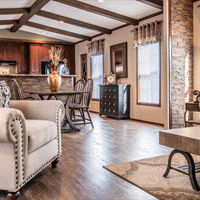


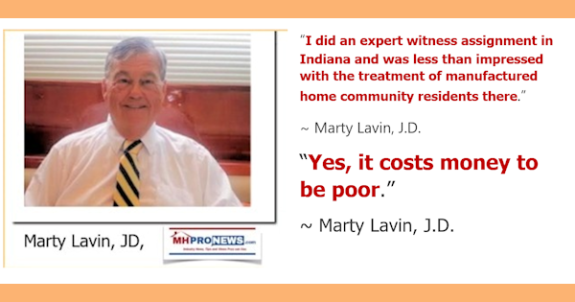
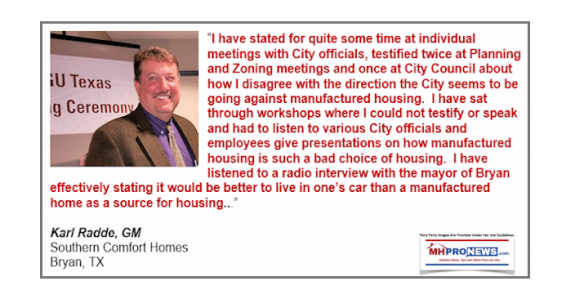
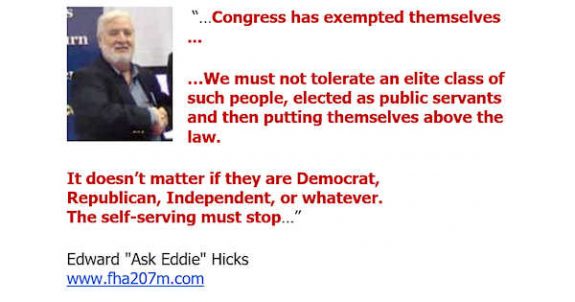
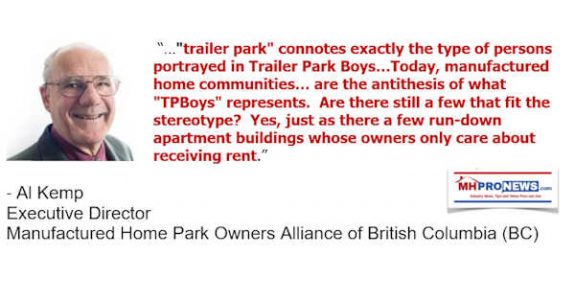
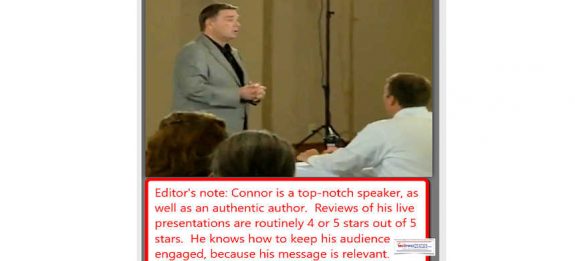
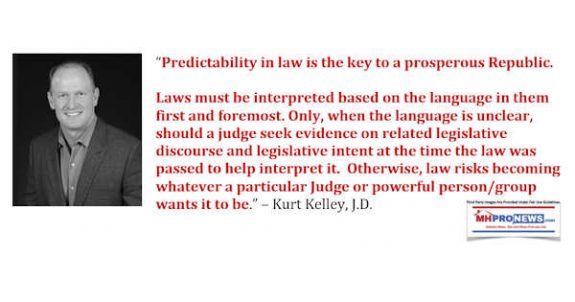
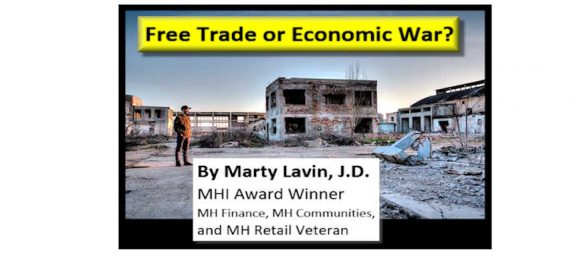
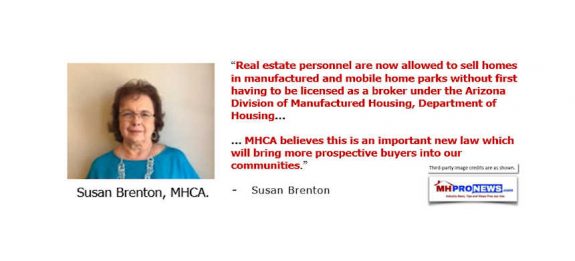
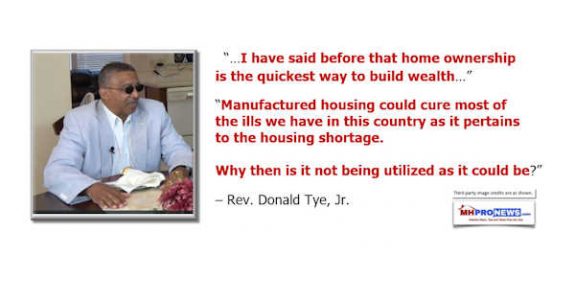
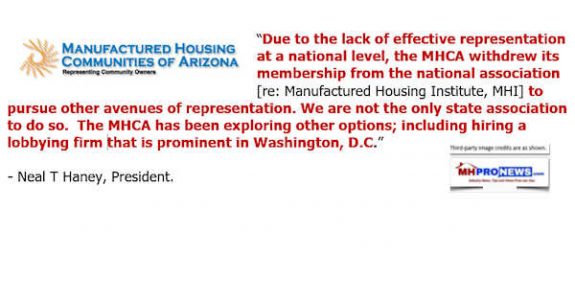

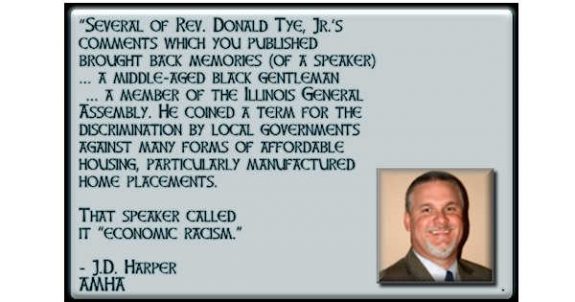
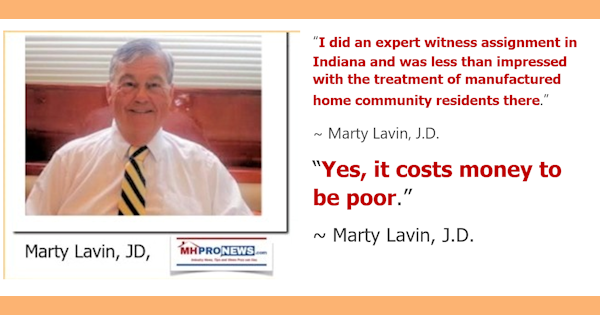
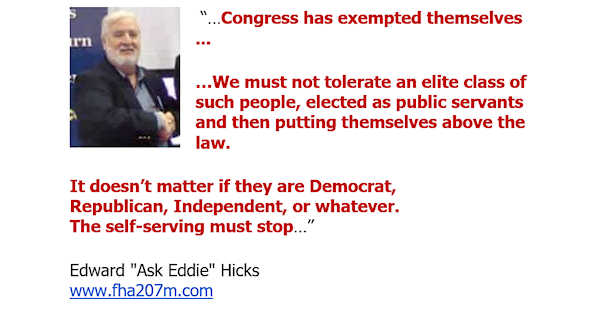
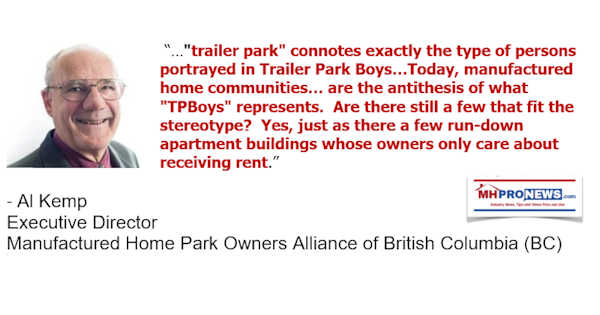
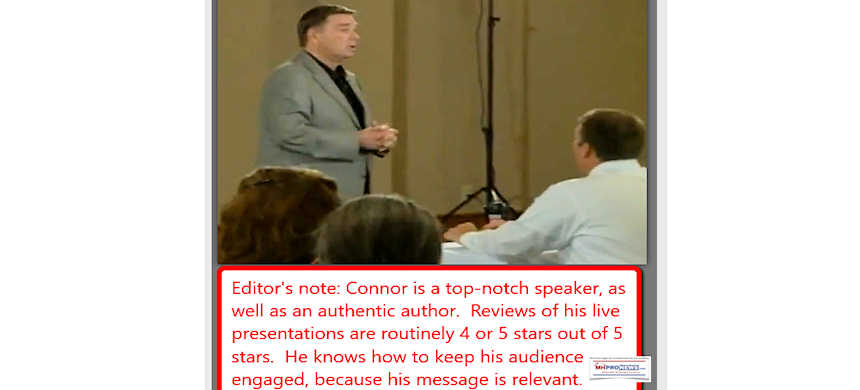
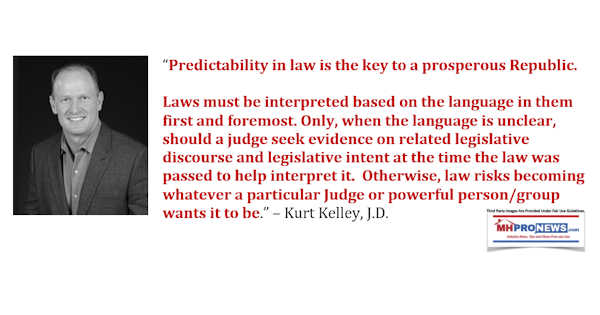
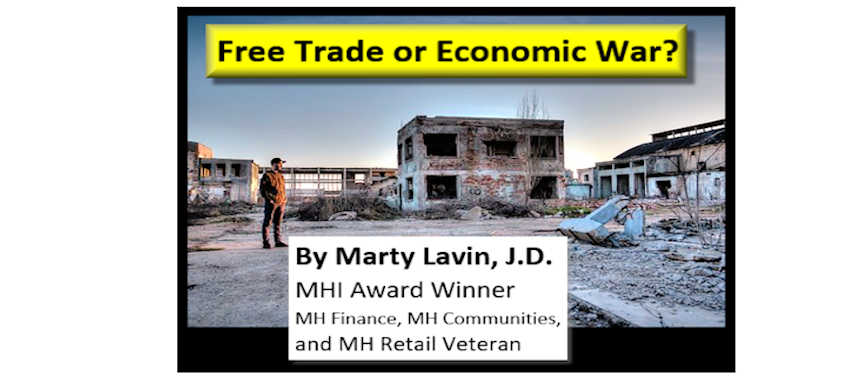
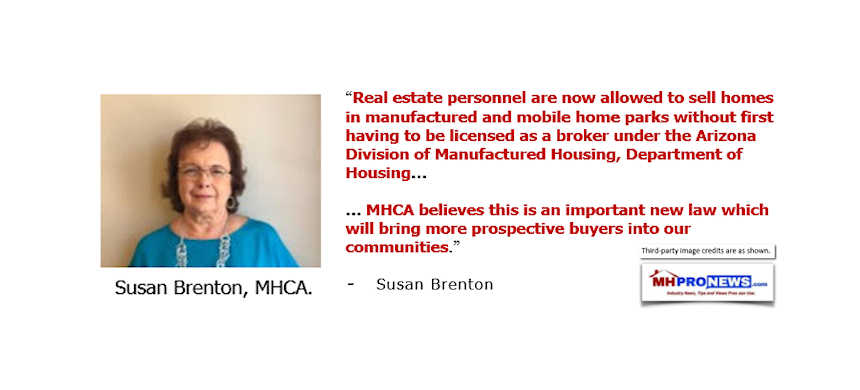
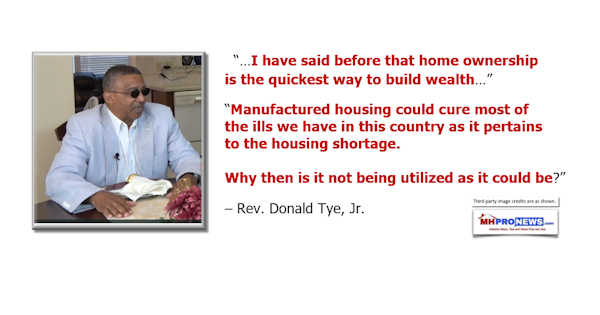
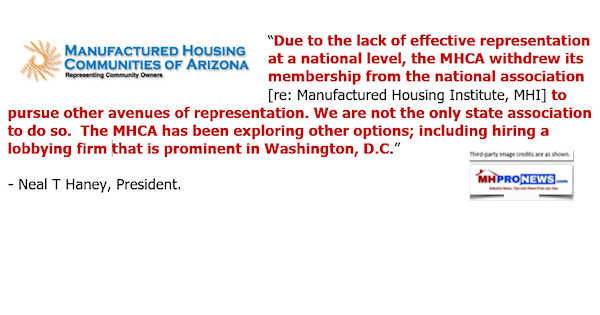

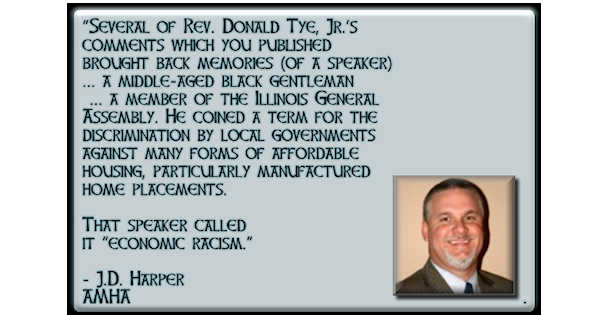
Karl Radde – TMHA, MHI, Southern Comfort Homes – Addressing Bryan City Leaders, Letter on Proposed Manufactured Home Ban
To All Concerned [Bryan City Officials, Others]: As the retail location referenced by Mr. Inderman, I would like to take a moment to address the …